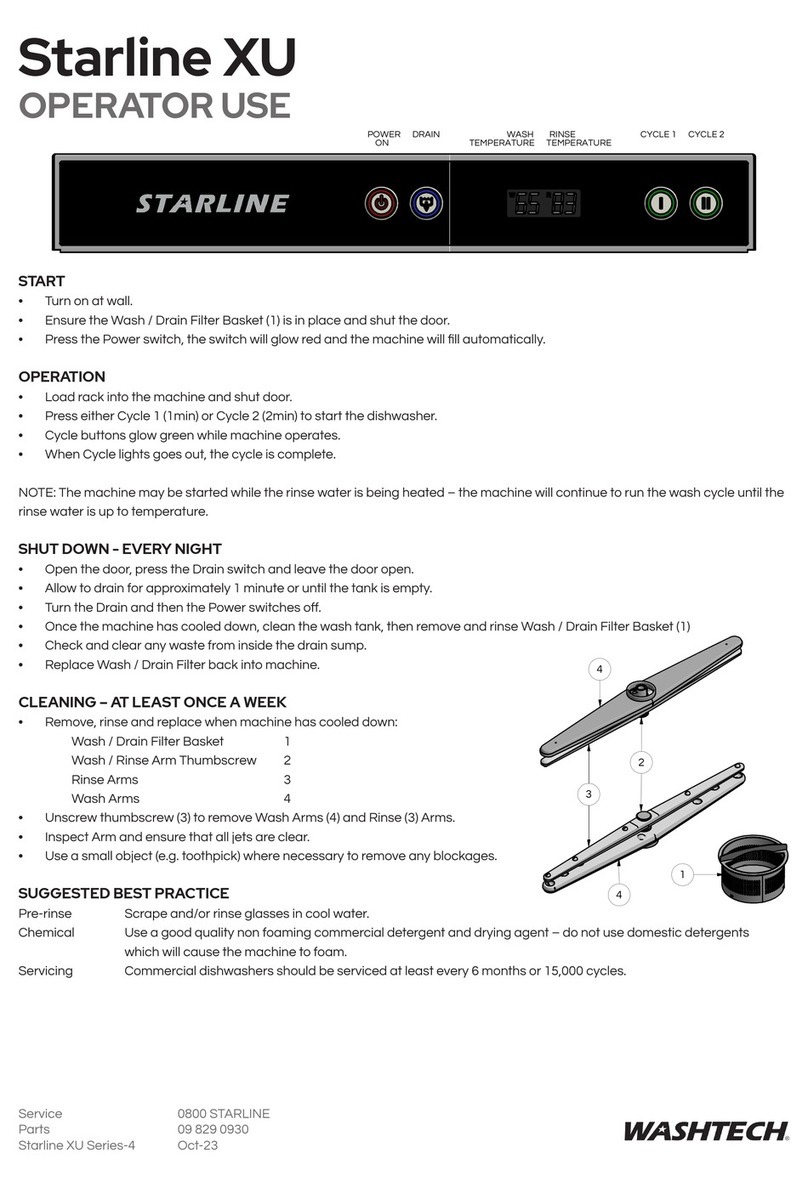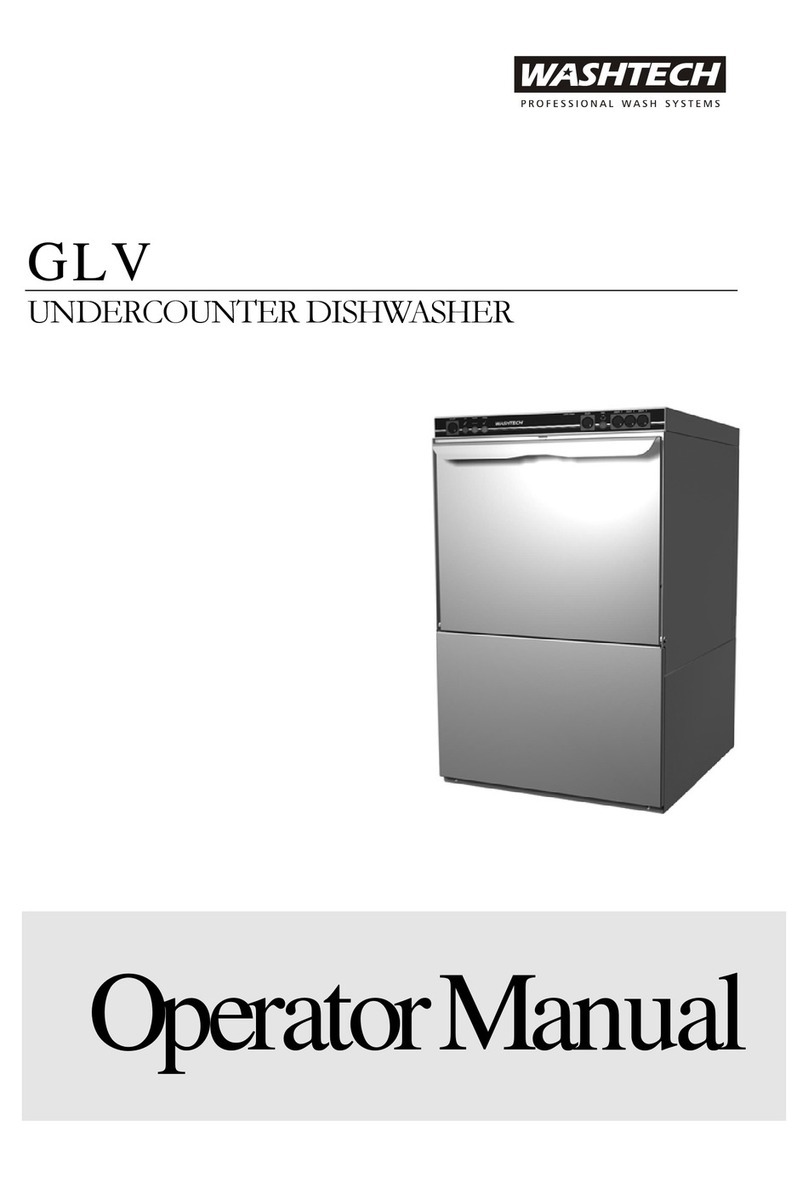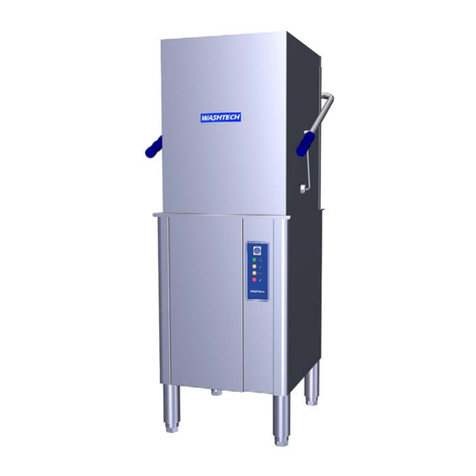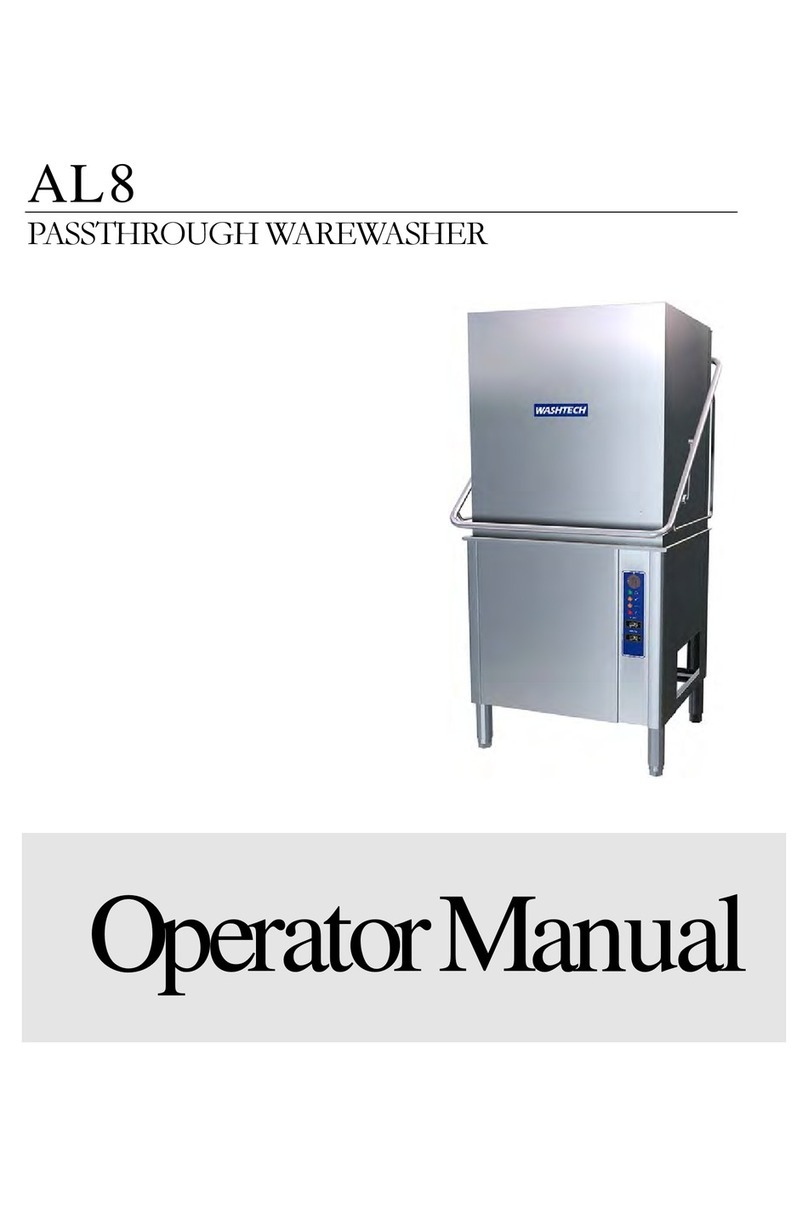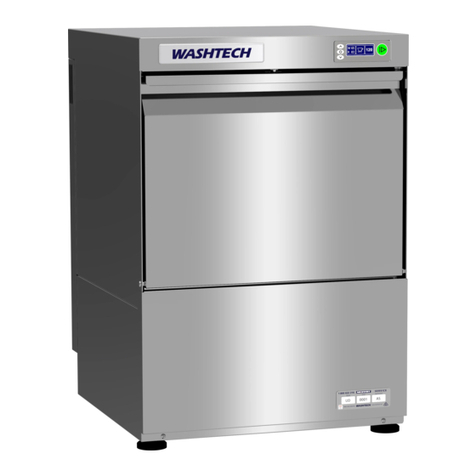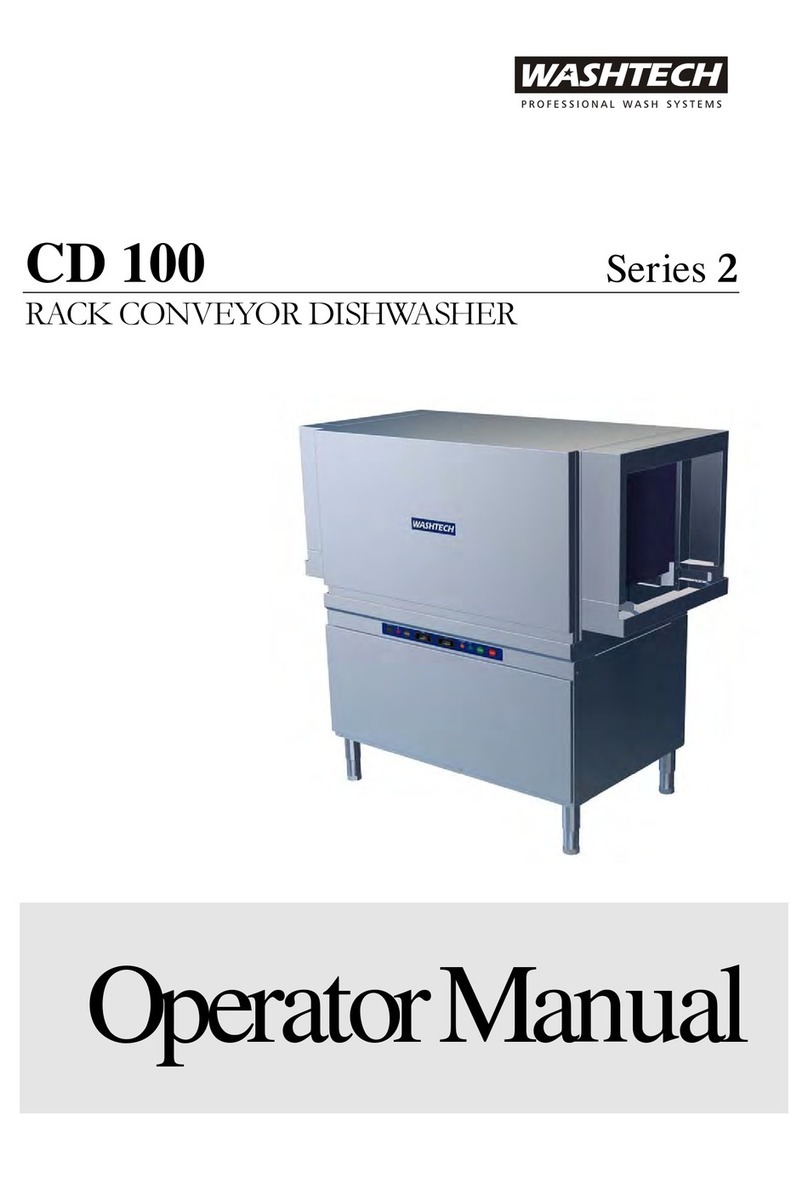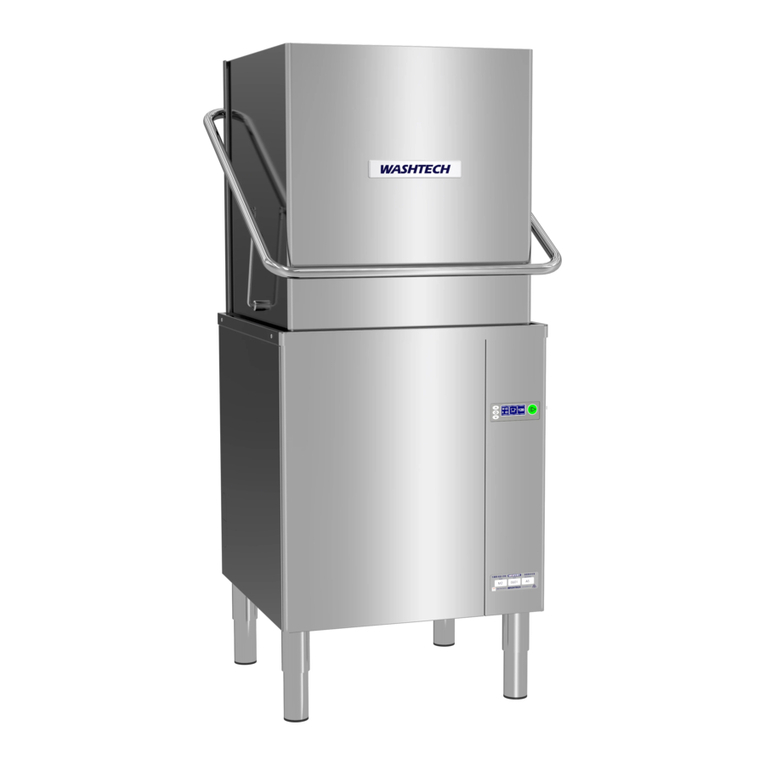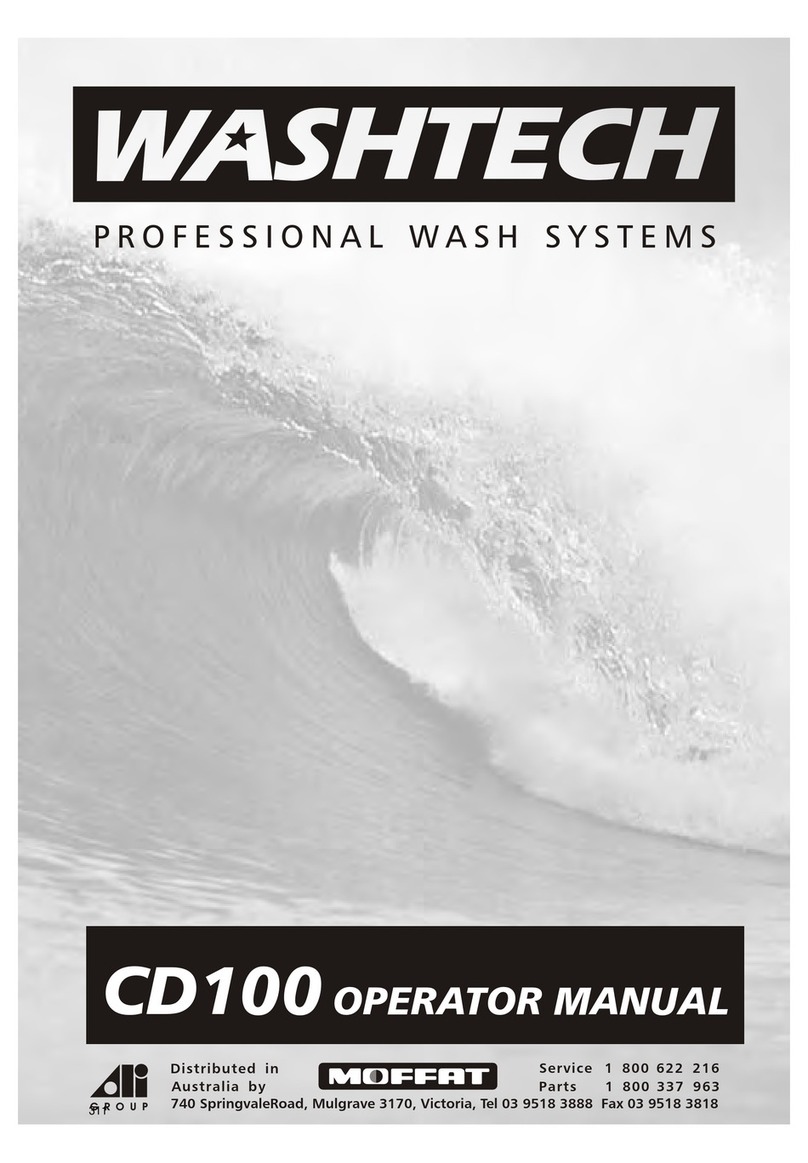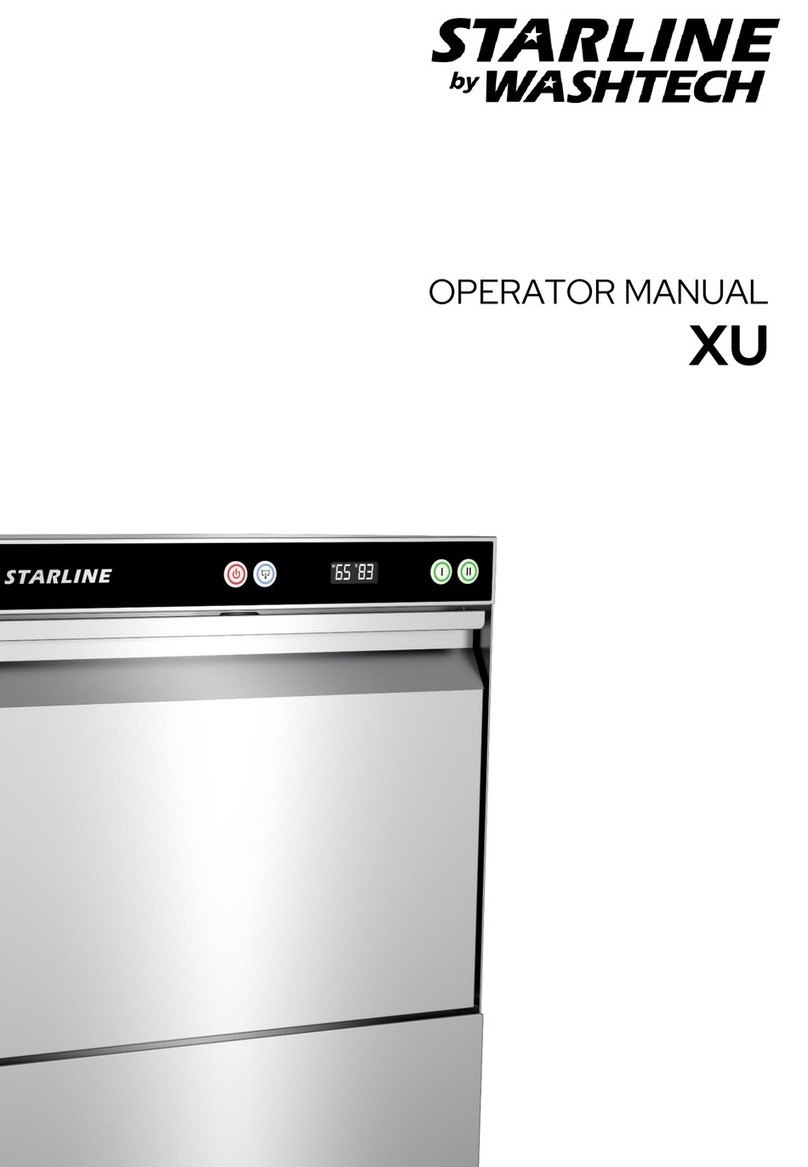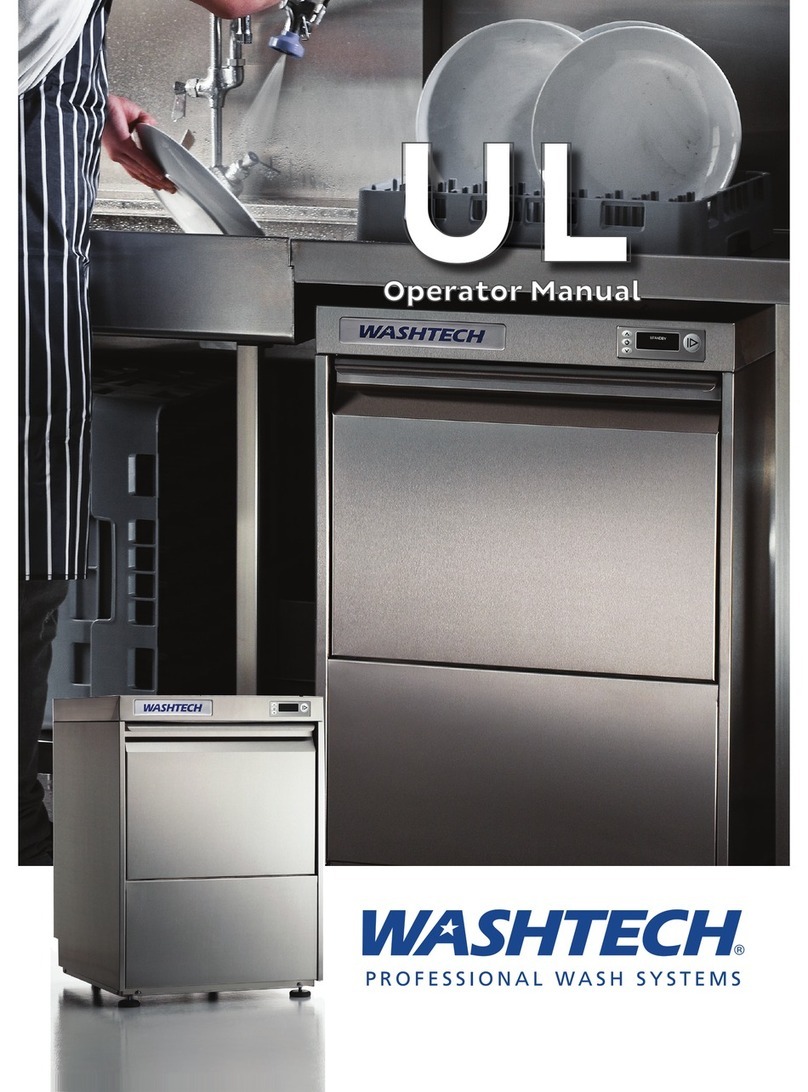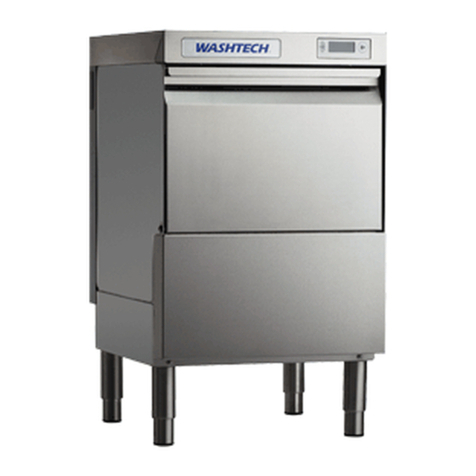
Contents
Safety Instructions....................................................................................................................... 4
Installation....................................................................................................................................... 5
Installation Diagram ............................................................................ 7
Installation Checklist........................................................................... 8
Maintenance Checklist........................................................................9
Dishwashing Procedures..........................................................................................................10
Troubleshooting Chart............................................................................................................. 11
Operating Instructions ............................................................................................................. 12
Components................................................................................................................................. 13
Location and Access ...........................................................................13
Rinse Thermostat............................................................................... 14
Wash Thermostat................................................................................15
Solenoid Valve..................................................................................... 16
Pressure Switch...................................................................................17
Wash Pump.......................................................................................... 18
Detergent Pump................................................................................. 19
Rinse Aid Injector................................................................................20
Electronic Timer ..................................................................................21
Assembly & Electrical Diagrams............................................................................................26
Wiring Tray Assembly........................................................................26
Control Panel Assembly ................................................................... 27
Wash System.......................................................................................28
Rinse System........................................................................................29
Wash Arm Assembly.......................................................................... 30
Rinse Tank Assembly .........................................................................31
Door Link Assembly ...........................................................................32
Rack Slide Assembly ..........................................................................33
Schematic Diagrams..........................................................................34
Spare Parts....................................................................................................................................36
Accessories .................................................................................................................................. 38
Appendices....................................................................................................................................39
Rinse Pump Retrofit..................................................................................... 41
Drain Pump Retrofit........................................................................................42
Revisions ........................................................................................................................................41
Notes...............................................................................................................................42
